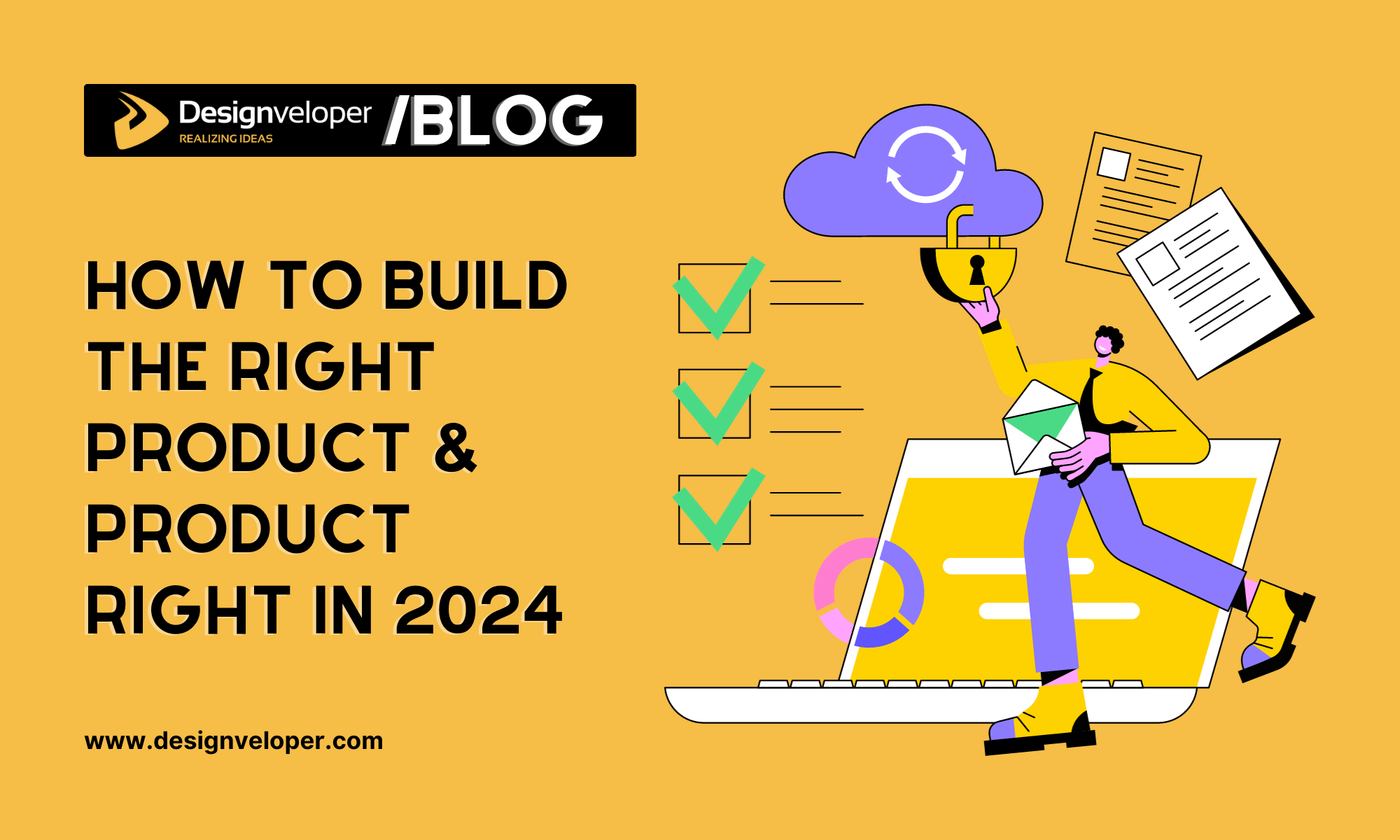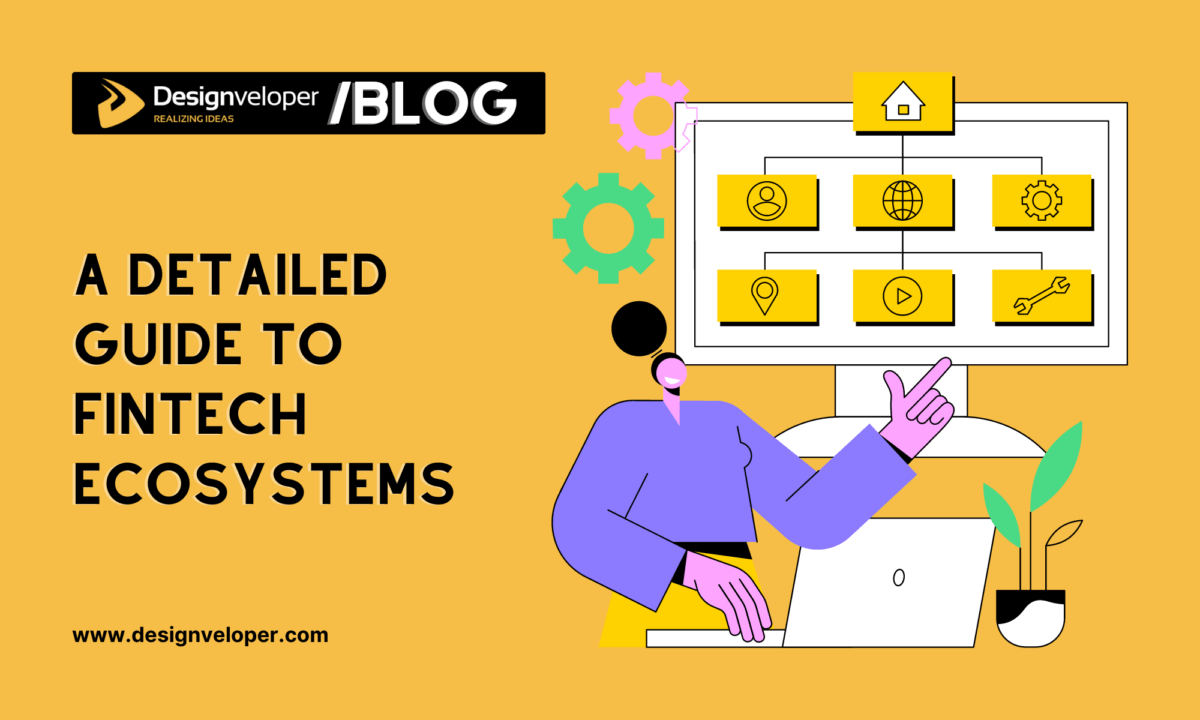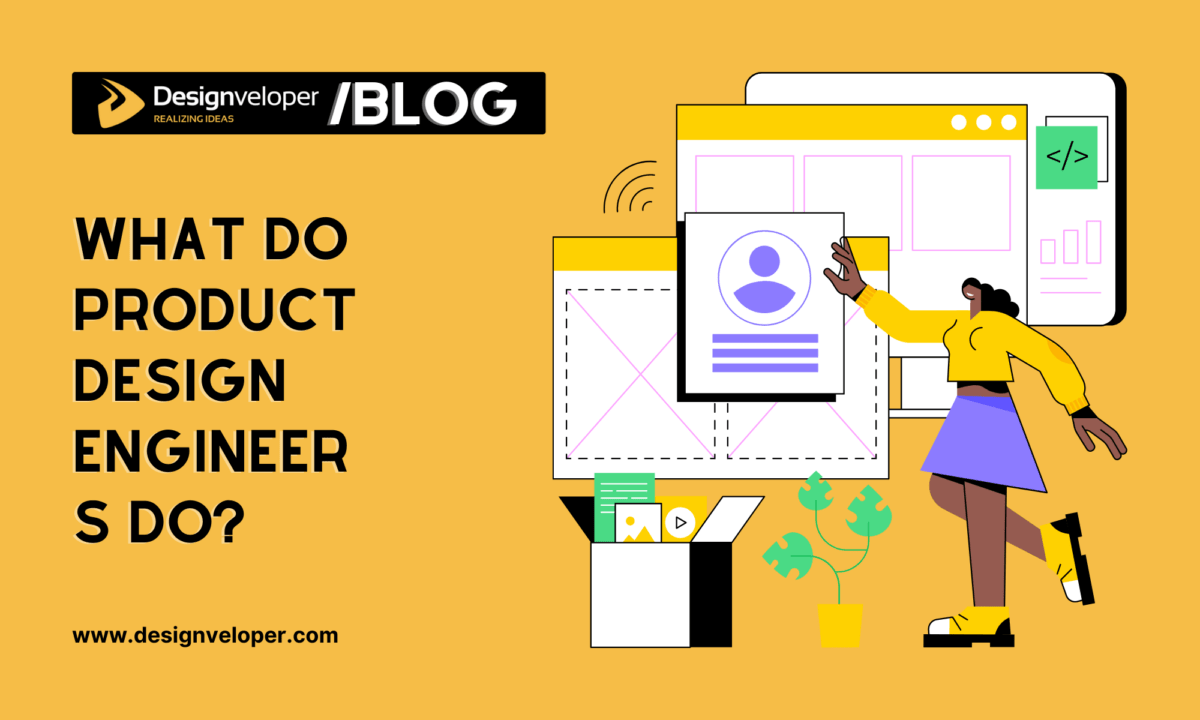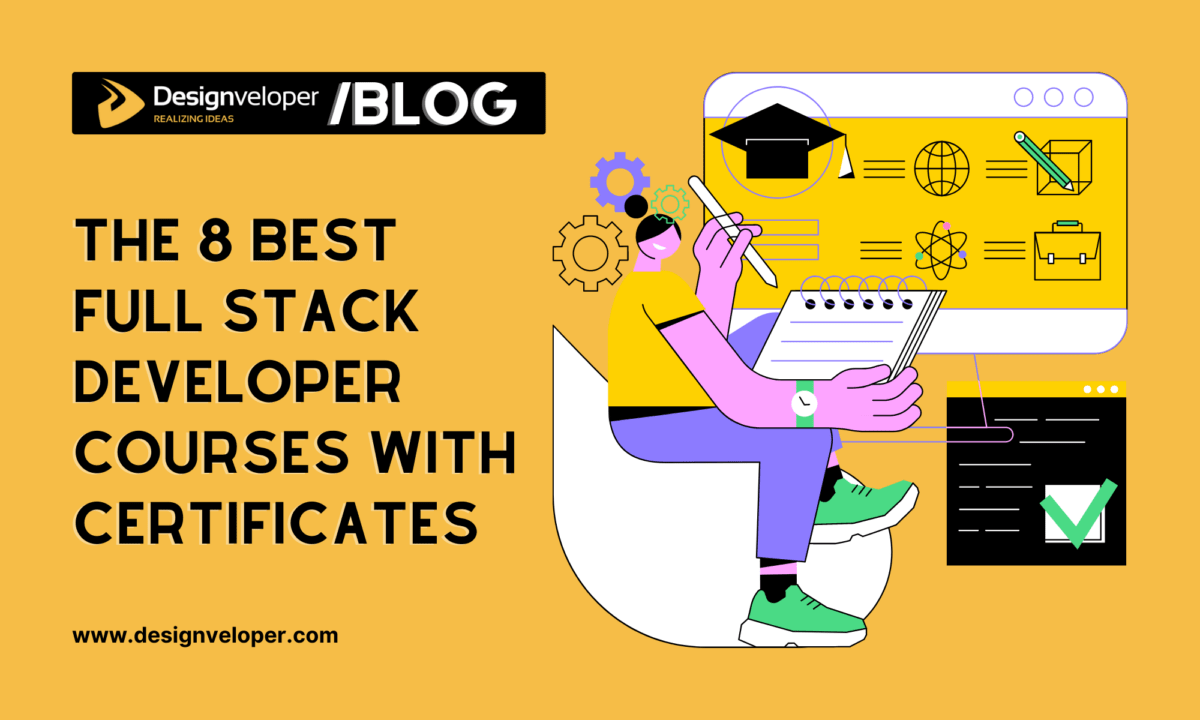In the world of digital product development, two concepts reign supreme: building the right product and building the product right. The first is about crafting the proper product that meets user needs, while the second is about the quality of the product’s development process.
In real projects, these two aspects intertwine. Selecting the right product sets the direction, but ensuring it’s developed correctly determines the journey. This guide is for those seeking to strike a balance between these two crucial aspects.
This article will delve into the key aspects of building the right product and product right. It also sheds light on how Designveloper incorporates these two concepts into the software development process. Besides, it highlights common pitfalls in software development and shares real-world case studies.
Now, let’s dive in!
How Can You Build the Right Product?
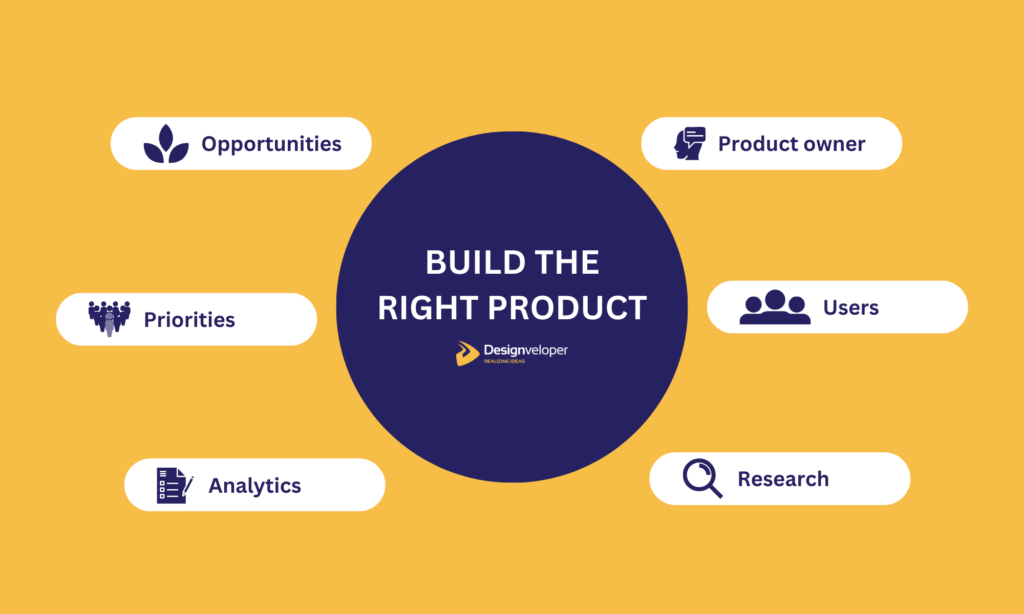
Building the right product is a journey that requires a clear vision, a deep understanding of the users, and a strategic approach. In software development, you need to take the key aspects seriously to ensure the product is developed on the right track and towards business goals as well as user needs.
Product Owner
Product owners are responsible for defining the product vision, managing the product backlog, and ensuring that the team is working on the most valuable features. So, the selected product owner needs to be competent and knowledgeable about the industry. This person should be empowered to make critical decisions about the product and bear the responsibility for the project’s outcome, whether it’s a success or failure, from a business standpoint.
Users
Understanding your users is fundamental to building the right product. It’s not just about knowing who they are, but delving deeper into the challenges they face and how your product can be the solution they need.
However, users might not always be able to explain their problems or know the best solutions to solve them well. So, the product owner needs to communicate well with users or do thorough research to accurately define these problems. From there, you can spot opportunities and leverage high-quality research and analytics to devise the most effective solutions.
Research
Research is the backbone of product development because it helps in making informed decisions and reducing risks. It may involve market research to understand the competitive landscape and user research to understand the needs and behaviors of your users.
Your team can conduct research in various ways, such as direct observations or user surveys. Through the lens of research, you can confirm the business challenges and potential solutions. It’s like a reality check for your product ideas.
Analytics
Analytics provides quantitative data about how your product is being used. It helps in understanding user behavior, identifying patterns, and measuring the impact of changes. Analytics data can guide product development by highlighting areas of improvement and opportunities for growth.
However, not all data is useful and essential for building the right product and product right. So, your team needs well-established analytics to decide which questions should be asked to get useful answers from data.
Priorities
In software development, prioritization involves solving the most crucial problems in the right order. Accordingly, it helps in focusing the team’s efforts on the most impactful tasks and ensures that the product evolves in the right direction. However, prioritizing features doesn’t only consider the value they bring to the users and your business. But your team has to balance other equally important factors such as risk and cost when choosing the features to build first.
Opportunities
Finding a problem and a solution doesn’t mean users will use your solution, especially if there are many similar ones out there. To stand out, you need to understand your market and find what makes you different. Looking deeply at market trends, user feedback, competitors, technological advancements, and data analytics, you can find opportunities that can make your product better than others. Being quick to spot and use these opportunities can lead to new ideas and growth.
How Can You Build the Product Right?
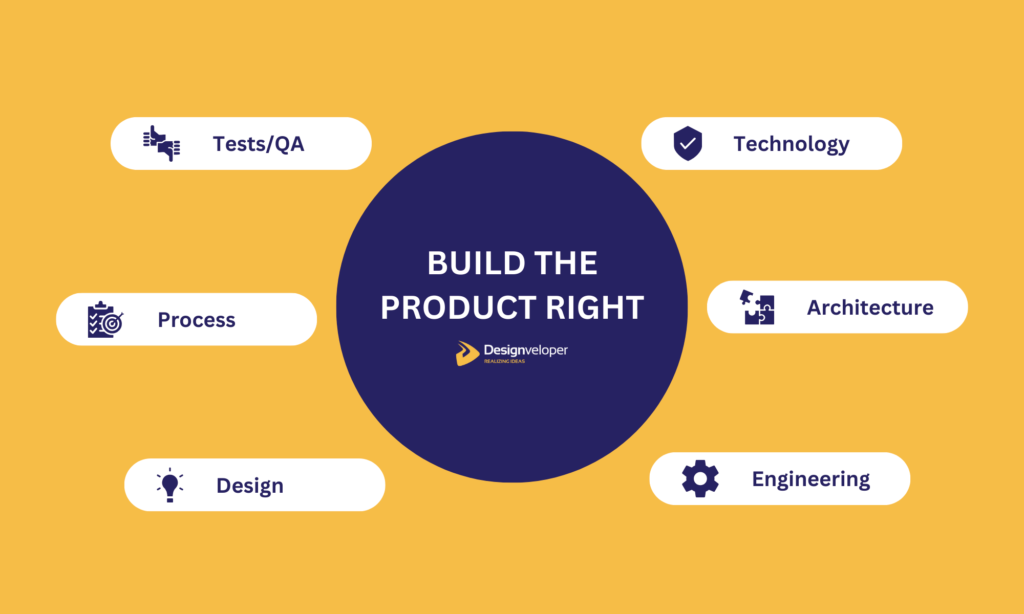
Software development is not just about having a great idea. It’s also about how you bring that idea to life in the most effective way. For this reason, you must consider some key areas to ensure the product not only meets the ultimate goals but also aligns with the technical requirements.
Technology
Choosing the right technology is an important step towards building your product right. It involves selecting the appropriate tech stack, programming languages, frameworks, and tools that align with your product requirements and team expertise.
Each technology has its pros and cons, affecting factors like speed and ease of use. The solution to your audience’s problems can influence your tech choices, and any trade-offs should be evaluated in the context of your business requirements. Further, it’s essential to thoroughly scrutinize all technologies, especially third-party tools, before incorporating them into your project.
Architecture
Identifying proper software architecture is a must to ensure that your product, once constructed, can be scalable and flexible to meet evolving needs.
Robust architecture requires you to draw a clear and comprehensive roadmap. Further, when you’re planning the architecture of your software, you have to consider all the pros and cons of different architectural decisions, including how much they will cost. These factors help you prepare good architecture for building the right product and product right.
Engineering
Engineering is where your product starts to take shape. It involves the actual coding and development work. The quality of engineering can significantly impact the functionality and reliability of your product. Therefore, it’s crucial to assemble a skilled team to ensure the product is developed accurately. But building the product right doesn’t stop there. It’s an ongoing process that involves constant enhancements to the engineering quality through regular, mindful refactoring.
Design
Designing the right product and product right doesn’t only count its aesthetics but also considers its usability. This process involves creating an intuitive user interface (UI), crafting a seamless user experience (UX), wireframing, prototyping, and conducting user tests.
To design your product effectively, your team needs to continuously refine it, starting from its most basic form and gradually evolving it into a well-defined version. This process includes constructing an information architecture, developing user workflows, and creating wireframes and high-fidelity prototypes.
Don’t forget to validate your design work at each step as well. This involves getting approval from the product owner or users and conducting extensive user testing during the process.
Process
The process refers to the methodologies and practices you follow to manage the product development lifecycle. Every project has a different development process, but still abides by some key requirements:
- Define Roles: Know who’s doing what. Clarity in roles eliminates confusion and boosts efficiency.
- Stakeholder Engagement: Keep the key players involved. Some may need updates on every task, while others only at major milestones. Regular check-ins ensure everyone’s on board and aligned with the project’s direction.
- Self-improvement: Make your process smarter over time. Welcome feedback, learn from it, and refine your process accordingly. This helps in catching and correcting mistakes early.
Remember, a successful project isn’t just about reaching the finish line; it’s about the journey too. A well-planned process gives everyone the confidence that they’re working on the right things. Accordingly, it minimizes errors, speeds up development, and most importantly, makes the project exciting and efficient for all involved.
Tests/QA
Testing and Quality Assurance (QA) ensure that your product works as expected and meets quality standards. It involves various types of testing like unit testing, integration testing, system testing, and user acceptance testing.
In the journey of software development, a blend of manual QA and automated testing ensures your project stays on track and delivers as expected.
Involve your QA team right from the start. Let them participate in sprint planning, standups, and more. This way, they’ll gain a deep understanding of the project’s objectives. Ideally, they should review each task before it’s presented to stakeholders, ensuring a thorough quality check.
Meanwhile, automated tests are like the project’s safety net. They quickly verify that your software is functioning correctly, enabling your developers to work more efficiently. But remember, they’re not a set-it-and-forget-it solution. They need regular upkeep to stay effective.
Software Development Process at Designveloper
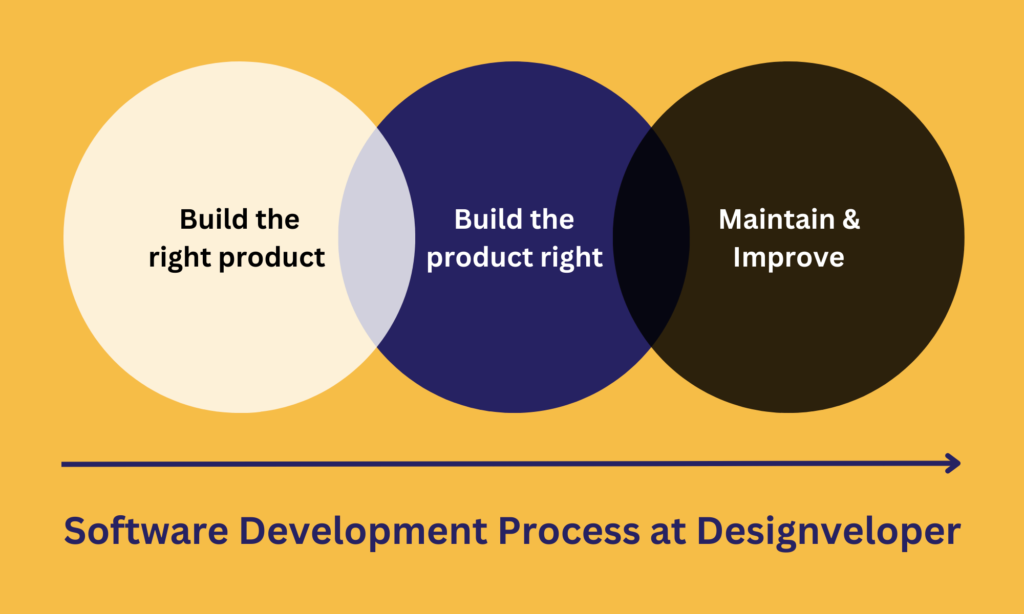
So, how has building the right product and product right played out in reality? At Designveloper, we have a systematic approach to software development that ensures we deliver high-quality products that meet our clients’ needs. This process is divided into three main stages: Building the Right Product, Building the Product Right, and Maintenance & Improvements.
Build the Right Product
The first step in our process is understanding the client’s requirements. The client presents their needs, and our Business Analyst (BA) gathers and clarifies these requirements, creating a preliminary list of features. Based on this feature list, the DSV team advises the client on the most suitable custom web development solution considering time and budget constraints. Once we reach an agreement on the solution and its implementation, we move on to the next stage.
Build the Product Right
In this stage, we focus on implementing the agreed-upon solution following the predefined milestones.
We consider essential technical aspects to ensure the product is developed correctly by using popular Agile frameworks like Kanban and SCRUM. These models benefit our custom web development process due to their flexibility and adaptability to changes in client requirements and the market.
Further, we look to incorporate upcoming trends or technologies (like PWAs or AI-powered chatbots) into our software development process. The choice of the right tech stacks depends on the predefined solution to our client’s problem.
Our team, usually consisting of 3-10 members depending on the project size, includes skilled software engineers, designers, QC/testers, and BAs. We set and review our targets weekly or bi-weekly, and a weekly report is sent to keep the client updated.
Also, to ensure the project is on track and to confirm customer requirements, we set up a demo monthly to see which part of the project has been done. This demo allows the client to see the progress made and provide immediate feedback, ensuring that the final product meets their expectations. Based on the feedback, we make necessary updates to ensure the product aligns with the client’s vision and needs.
Maintenance and Improvements
After the product is built, we don’t stop there. We believe in continuous improvement and regularly update and maintain the product to ensure it remains relevant and effective. This stage involves regular check-ups, debugging, and feature updates based on user feedback and changing market trends. This approach ensures we build the right product and product right every time.
Top 4 Common Mistakes in Software Development
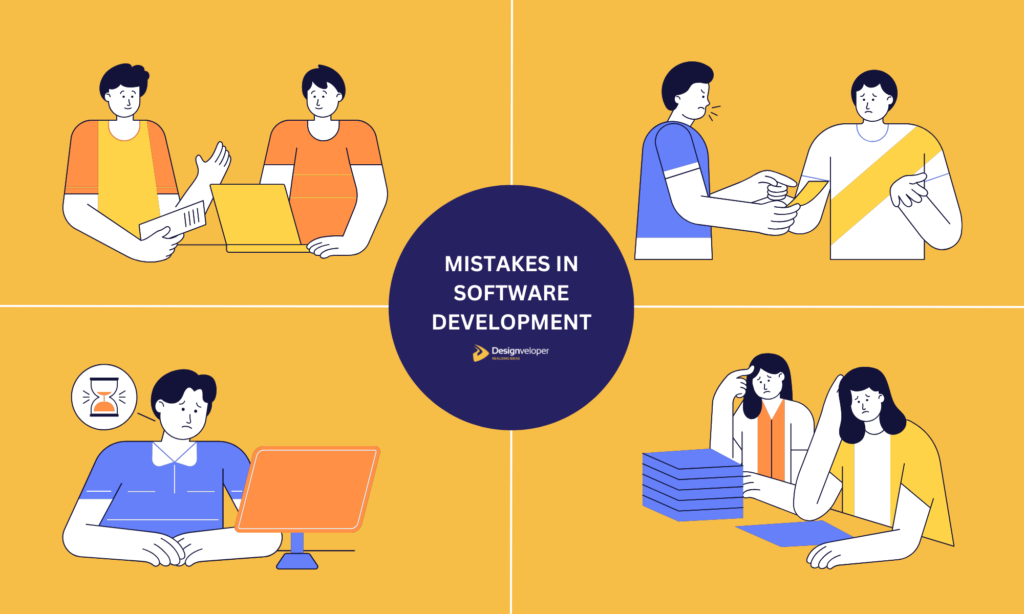
In the realm of software development, the journey to deliver the right product and product right is often fraught with challenges. Missteps can lead to delays, cost overruns, and even project failure. According to a report, poor software quality collectively costs U.S. businesses $2.08 trillion each year. So to avoid unexpected costs and reputation damages, you should be cautious about the four common mistakes as follows:
Misunderstand the Client’s Requirements
Creating a product that aligns with your client’s business objectives and caters to the end-user’s needs is crucial. This process begins with a deep understanding of the challenges your client or users are grappling with. Only then can you devise the right solution and develop the product in the right way.
However, misunderstanding the client’s needs can lead to a mismatch between the product and expectations. This can be due to a lack of clear communication or misinterpretation of the client’s vision. Sometimes, lacking domain knowledge can also be a stumbling block in meeting the client’s requirements, especially in heavily regulated industries like healthcare and finance.
Therefore, before starting the development process, project managers must make the project’s requirements clear to all team members and stakeholders involved.
Fail to Communicate Effectively
While technical prowess is undeniably important in software development, it’s not the be-all and end-all for delivering the right product and product right. A common pitfall in the industry is the tendency to focus solely on professional knowledge, neglecting the importance of soft skills, particularly communication.
According to a study by Pumple, business leaders have identified poor communication as a significant detriment to productivity (43%), causing missed deadlines (42%), and even resulting in financial damage (38%).
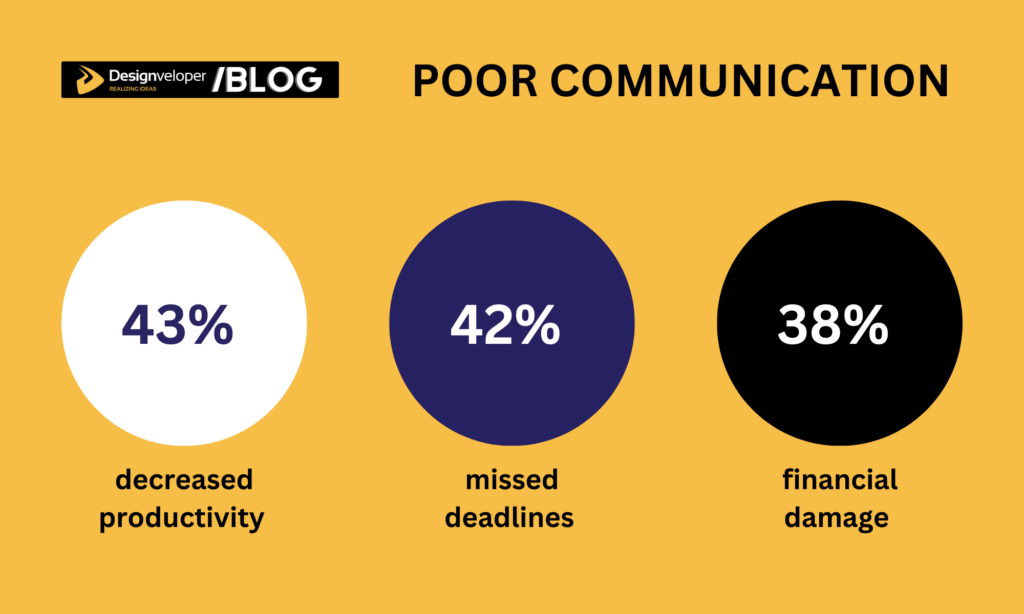
The ability to communicate effectively with team members, stakeholders, and other members of an organization is not just a nice-to-have, but a necessity. It’s the key to understanding business objectives, liaising with clients, delivering high-quality products, and even enhancing technical skills through group discussions and learning.
Set Unrealistic Development Timelines
Another mistake in software development is setting an unrealistic schedule. This often stems from a lack of understanding of the complexity of the project or an underestimation of the time required for each development phase.
Rushing through the development process can lead to poor-quality products, increased costs due to rework, and team burnout. So, it’s crucial to set realistic timelines that allow for thorough planning, development, testing, and debugging to ensure the delivery of a high-quality product.
Lack Essential Resources
The lack of essential resources also leads to the failure of software projects. This can range from not having enough skilled developers on the team to lacking the necessary hardware or software tools.
Insufficient resources can result in delays in the project timeline, lower work quality, and increased stress among team members.
So, project managers ensure that they have all the necessary resources in place before starting a project. This includes having a team with the right skills and experience, as well as the necessary tools and equipment to carry out the project effectively.
Real-World Success Stories: The Art of Building the Right Product and Product Right
In the realm of software development, the mantra of “building the right product and product right” is not just a theoretical concept but a practical guideline that has led to the success of many real-world projects. Let’s explore this concept through some practical examples:
Slack – The Accidental Success
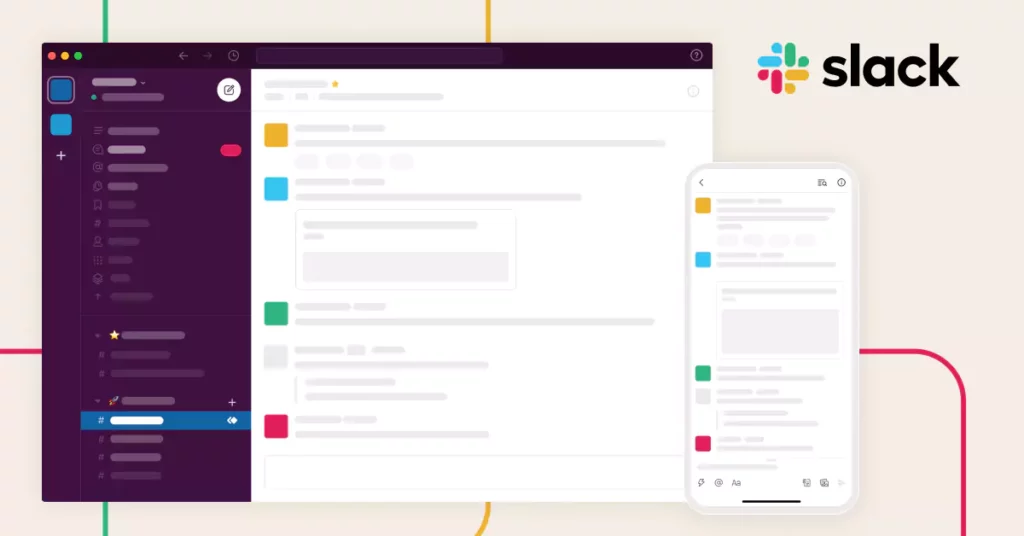
Slack is a leading communication tool used by teams worldwide. Initially, it was an internal tool for a gaming company. When the game didn’t succeed, the company realized the potential of the tool they had built. They pivoted and focused on perfecting Slack, turning a potential failure into a resounding success.
The tool was developed with the right intent – to improve communication and collaboration in teams, and they were developed right – with user-friendly interfaces and robust features that meet the needs of their users and increase workflow efficiency.
Google Maps – The Pioneer of Online Map

Launched in 2005, Google Maps has transformed the way we experience the world around us. It’s built not only as a tool for navigation from A to B, but also as a comprehensive guide to simplify life. Google Maps empowers users to discover local businesses, gain insights from others’ experiences, and make informed decisions.
Google Maps transcends its original design, evolving into a self-sustaining ecosystem where user contributions enhance the overall experience. The more users invest in it, the more value they derive. This user-centric approach prompted Google to reimagine maps. They stopped thinking about maps as a mere means of getting around and started considering how geographical spaces can curate meaningful experiences for users.
ODC – The Revolution of Healthcare Service
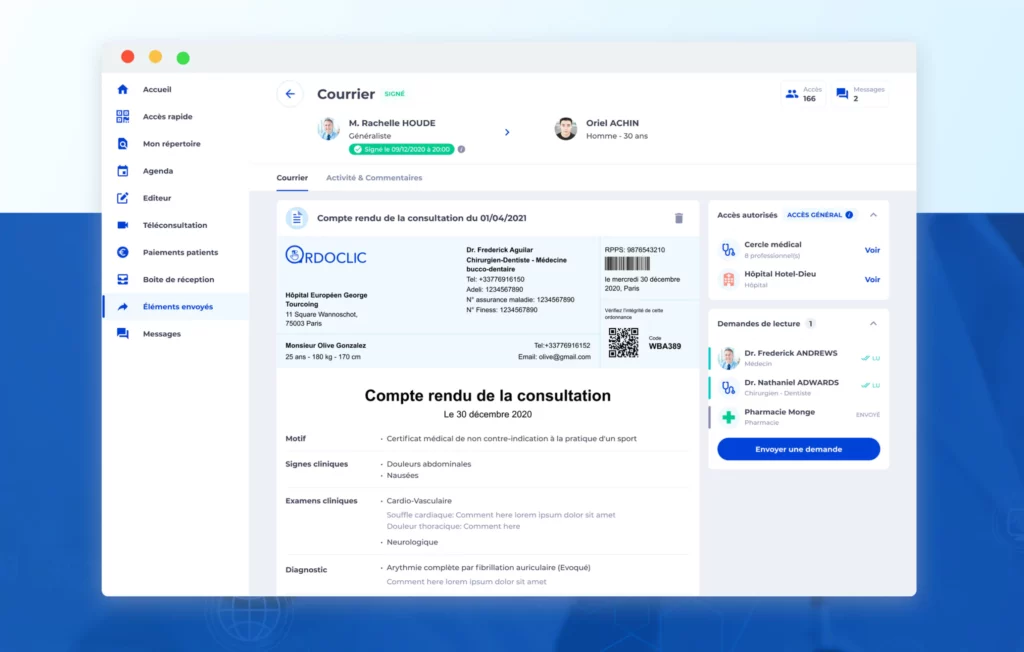
Ordoclic (ODC), developed by Designveloper, is a prime example of building the right product and product right. It’s a cross-platform healthcare app connecting doctors and patients in France for e-prescriptions and more.
In the digital age, is paramount. The birth of ODC helps address the need to digitize healthcare services while adhering to government standards. Understanding this need, we prioritized a solution that abided by HIPAA and GDPR to ensure the complete security of all sensitive information. Facing the client’s demand for handling big data, our remote team used essential technologies like Golang, Node.js, or Python to promptly deliver significant features.
To develop the product right, we follow Agile backlog grooming, a process intricately linked to data handling tasks. Our software development also necessitates the active participation of the local team to ensure compliance. By following these meticulous practices, we successfully developed the right solution for our client in the healthcare sector.
Final Words
In the realm of digital creation, mastering the art of building the right product and product right is paramount. As we conclude this guide, remember, the path to success lies in this delicate dance. Whether you’re a developer or a business owner, applying these concepts ensures products that not only meet user needs but are crafted with excellence. Remember, choosing the right product sets the direction, but building the product right determines the journey. So, let’s take these lessons and make 2024 a year of successful software development!
